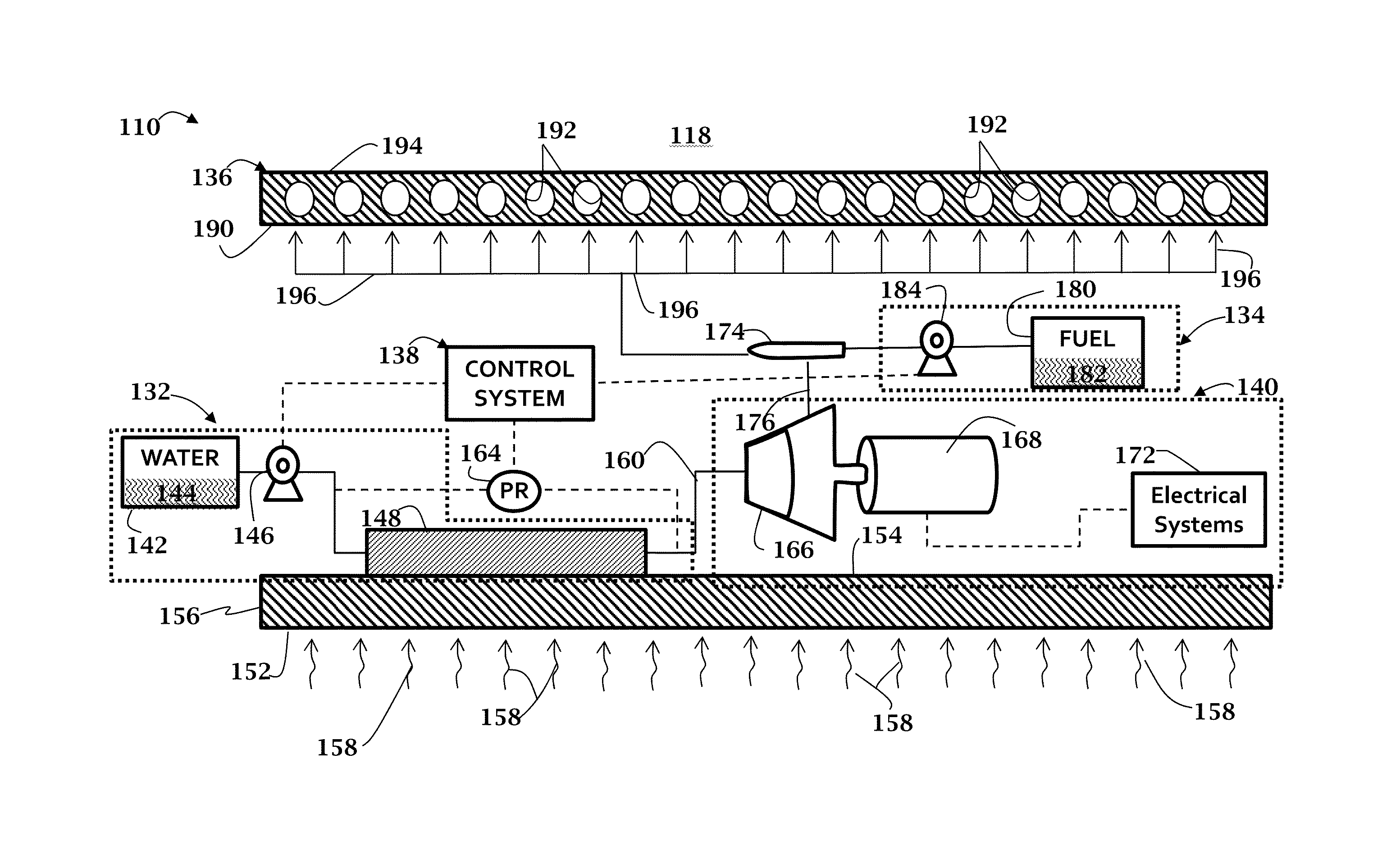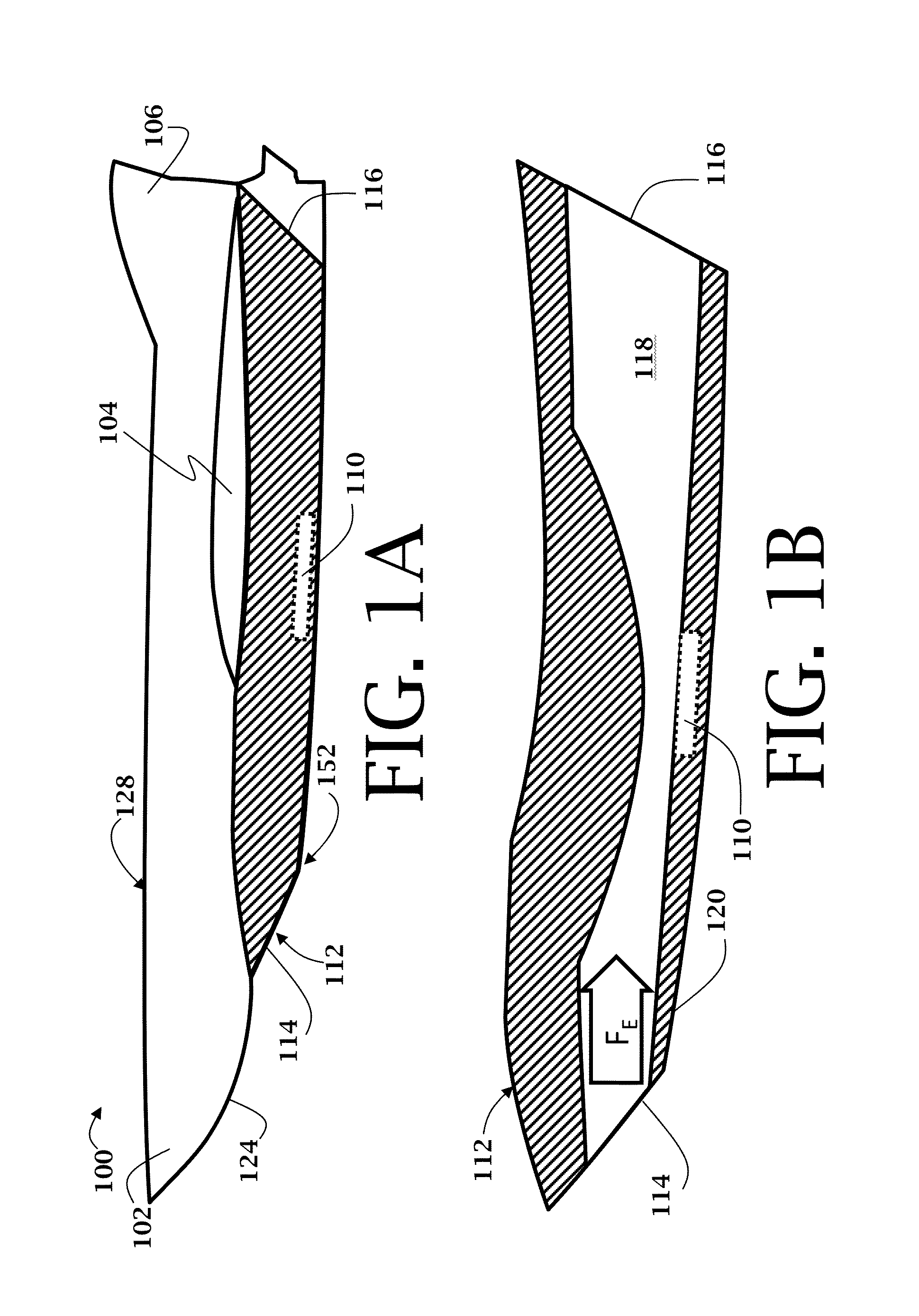High-speed vehicle power and thermal management system and methods of use therefor
a technology of high-speed vehicles and thermal management systems, which is applied in the direction of turbine/propulsion fuel heating, efficient propulsion technologies, machines/engines, etc., can solve the problems of significant problems, the heat load generated during flight often exceeds the capacity of these conventional endothermic fuel cooling systems, and the cryogenic fuel sensible energy capacity is insufficient to provide platform-level cooling
- Summary
- Abstract
- Description
- Claims
- Application Information
AI Technical Summary
Benefits of technology
Problems solved by technology
Method used
Image
Examples
example 1
[0051]FIG. 7 is a schematic representation of a thermal management and power generation system according to an embodiment of the present invention, modeled using AMESim software (LMS Imagine.Lab®, LMS® International). The modeled thermal management generation system includes a first heat exchanger 280, a second heat exchanger 282, and a turbine 284. Conduits for water are illustrated as solid lines; conduits for fuel are illustrated as dashed lines.
example 2
[0052]FIG. 8 is a schematic illustrating results of modeling of the thermal management and power generation system of Example 1. Calculations were performed on AMESim software with units per 1000 lbs thrust and assuming about 5 steam wt %. As shown in FIG. 8, aerodynamic and / or vehicle system heating vaporizes the water, absorbing a heat load of approximately 25.4 kW to generate steam, which enters the turbine. The heat engine of the thermal management and power generation system can then be expected to generate over 3 kW of power for use onboard the vehicle. The endothermic fuel may also be used to cool the vehicle, absorbing a heat load of about 19 kW.
[0053]The present invention comprises a combined thermal management and power generation system and methods for using the same. An exemplary system may incorporate a heat engine fluid power generation system into an endothermic fuel cooling system. The presently disclosed system may be particularly useful for high supersonic and hype...
PUM
 Login to View More
Login to View More Abstract
Description
Claims
Application Information
 Login to View More
Login to View More - R&D
- Intellectual Property
- Life Sciences
- Materials
- Tech Scout
- Unparalleled Data Quality
- Higher Quality Content
- 60% Fewer Hallucinations
Browse by: Latest US Patents, China's latest patents, Technical Efficacy Thesaurus, Application Domain, Technology Topic, Popular Technical Reports.
© 2025 PatSnap. All rights reserved.Legal|Privacy policy|Modern Slavery Act Transparency Statement|Sitemap|About US| Contact US: help@patsnap.com



